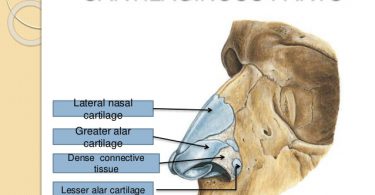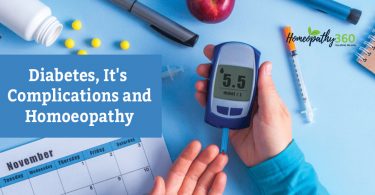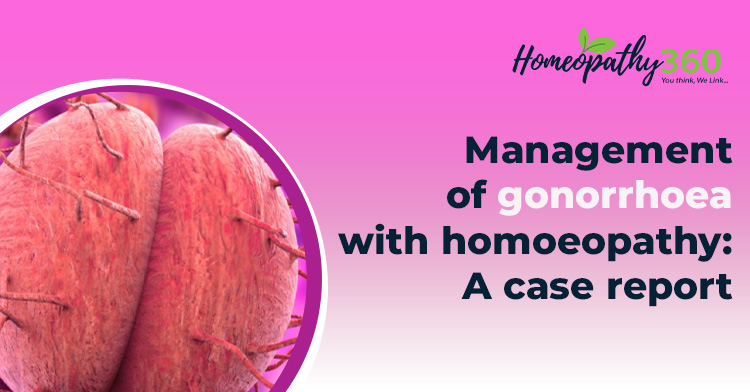
Abstract
A case of gonorrhoea associated with involuntary seminal discharge at night with weakness and anxiety after discharge was treated with few doses of Medorrhinum 200 which showed remarkable results in just 2 weeks. Later continued with placebo over a period of time resulted in complete disappearance of symptoms.
Keywords: gonorrhoea4, STIs, Medorrhinum8
Abbreviations:
NAATs – nucleic acid amplification tests, STI – sexually transmitted infections, MSM – man who has sex with men,HIV – human immunodeficiency virus.
Introduction
Gonorrhoea, caused by Neisseria gonorrhoeae, is the second most common bacterial STI and results in substantial morbidity and economic cost worldwide. Uncomplicated gonococcal infection commonly manifests as urethritis in men and may cause mucopurulent cervicitis in women. Rectal and pharyngeal infections in both men and women are largely asymptomatic. Gonococcal infections are often asymptomatic in women; the lack of discernible symptoms results in unrecognised and untreated infection that may lead to serious complications, including pelvic inflammatory disease, ectopic pregnancy and infertility. Untreated urethral infection in men can lead to epididymitis, urethral stricture and infertility. Infants of mothers with gonococcal infection can contract neonatal conjunctivitis, which may lead to blindness if left untreated1.
Neisseria gonorrhoeae can be diagnosed by culture or nucleic acid amplification tests (NAATs), and by Gram stain in men with urethritis. In settings without available laboratory diagnostic support, diagnosis is often made clinically, based on the presence of symptoms such as vaginal and urethral discharge. The treatment of gonococcal infections is complicated by the rapidly changing antimicrobial susceptibility patterns of N. gonorrhoeae, raising concerns about the eventual development of untreatable gonococcal infections with serious sexual and reproductive health consequences1.
Risk factors for gonorrhea include sexual contact with an infected person or someone from an endemic area; previous gonorrhoea, STIs or human immunodeficiency virus (HIV); being a sexually active youth; having multiple partners; and being a sex worker, street youth and/or man who has sex with men (MSM).1,5 Geographic clustering of gonococcal infections is associated with minority ethnic groups, low socioeconomic status and lack of education2.
Gonococcal infections are considered uncomplicated in the absence of bacteraemia or pathogen spread to extragenital sites3. However, left untreated, this infection can have serious sequelae. These include pelvic inflammatory disease, infertility, ectopic pregnancy and chronic pain in women and epididymo-orchitis, reactive arthritis and, rarely, infertility in men3. In both genders, the infection can progress to disseminated disease.
Case summary:
A 31 years old married male reported at outpatient department of Chandola homoeopathic medical college and hospital, Rudrapur, Uttarakhand with complaint of an outgrowth on penis with involuntary seminal discharge at night for 2 weeks associated with weakness and anxiety. He was also presented with chest pain with pricking sensation which gets aggravated on physical hard work, night and lying down on any position for 2 months and pain in head in the occiput region with heaviness which aggravates while mental exertion, pressure and noise for 2-3 months.
Past medical history:
Patient suffered from dengue at the age of 18yrs also had jaundice at the age of 25 yrs.
Family history:
History of jaundice (mother)
Physical generals:
- Appetite: Decreased
- Thirst: Thirsty, normal water, 10-12 glasses/day
- Desire: Egg, milk, chicken
- Aversion: Nothing significant
- Intolerance: Nothing significant
- Stool: Constipated, in 2-3 days, hard, dry in character
- Urine: Clear, regular, non-offensive
- Perspiration: Generalised, non-offensive, non-staining
- Sleep: Disturbed, unrefreshing, 4-5 hrs/day
- Dreams: of coition, accident
- Thermal reaction: Ambithermal
Mental generals:
- Don’t regret for any wrong task or using abusive language during any conflict
- Fear of misfortune
- Anxiety about his health
- Irritation on trifles
Table 1: Analysis and Evaluation of symptoms:
| Physical generalsIntensity | Appetite decreased+ | Desire for egg+, Milk++, Chicken+ | Constipation, hard, dry stool | Dreams of coition, accident | Sleep disturbed, unrefreshing | |
| Mental generalsIntensity | Abusive, have no regret of using bad language | Fear of misfortune | Anxiety about his health | Irritation at trifles | ||
| ParticularsIntensity | Outgrowth on penis with involuntary seminal discharge++ | Involuntary seminal discharge at night | Weakness and anxiety | Pain in chest with pricking sensation | Pain aggravated- physical work, night | Pain in occiput aggravated at mental exertion |
Provisional diagnosis:
Gonorrhoea4
Totality of symptoms:
- Outgrowth on penis with involuntary seminal discharge.
- Involuntary seminal discharge aggravated at night.
- Weakness and anxiety aggravation at night.
- Pain in chest with pricking sensation aggravated during physical work and at night.
- Pain in occiput aggravated on mental exertion.
- Desire for milk.
- Constipation with dry and hard stools.
- Use abusive language without any hesitation and regret.
- Fear of misfortune.
- Anxiety about his health.
- Gets irritable at trifles.
Rubrics5 selected:
- MIND – ABUSIVE – insulting
- MIND – ANXIETY – health, about – own health, one’s
- MIND – FEAR – misfortune, of
- MIND – IRRITABILITY – trifles, from
- HEAD – PAIN – dull pain – occiput
- MALE GENITAL/SEX – CONDYLOMATA – penis – glans
- MALE GENITAL/SEX – POLLUTIONS – night – followed by – weakness
- CHEST – PAIN – pricking – Precordial region – motion – agg
- GENERALS – FOOD and DRINKS – milk – desire- cold
Analysis of the case:
After the analysis and evaluation of the case, the characteristic symptoms were used to form the totality “abusive, anxiety about his own health, fear of misfortune was some of the important mental generals. Desire of milk was an important physical general, and outgrowth on penis with seminal discharge aggravated at night associated with weakness and anxiety, headache in occiput region and pain chest were some of the characteristic particulars”.
The selection of the remedy was done on the basis of repertorisation from RADAR 10 software using Synthesis treasure edition, 2009 by Frederick Schroyens5 with reportorial result showing top five remedies as Medorrhinum, Carcinosinum, Lachesis mutus, Phosphorus, Bryonia alba with Medorrhinum having the highest score covering all the nine rubrics.
Prescription:
Medorrhinum8 200 / 3 doses
Basis of prescription:
After analysing the reportorial result and consultation with “The Guiding Symptoms of Our Materia Medica6and The Dictionary of Practical Materia Medica”7, Medorrhinum 200 was selected for prescription (including symptoms such as abusive, fear of misfortune, anxiety about his health, desire for milk, outgrowth on penis with involuntary seminal emissions at night, Pain in chest and head in the occiput during physical exertion) although Carcinosinum and Lachesis also has irritability and fear of misfortune but particulars of the case are very well covered by Medorrhinum along with others characteristic symptoms of the case. According to the prevalent sycotic miasm of the patient Medorrhinum was selected as the prescribed medicine. Medorrhinum 200 was given in 3 doses after which patient showed improvement followed by placebo for 1 month.
Potency: The very highest potencies only of service. Must not be repeated often8.
Fig 1: Repertorial Analysis
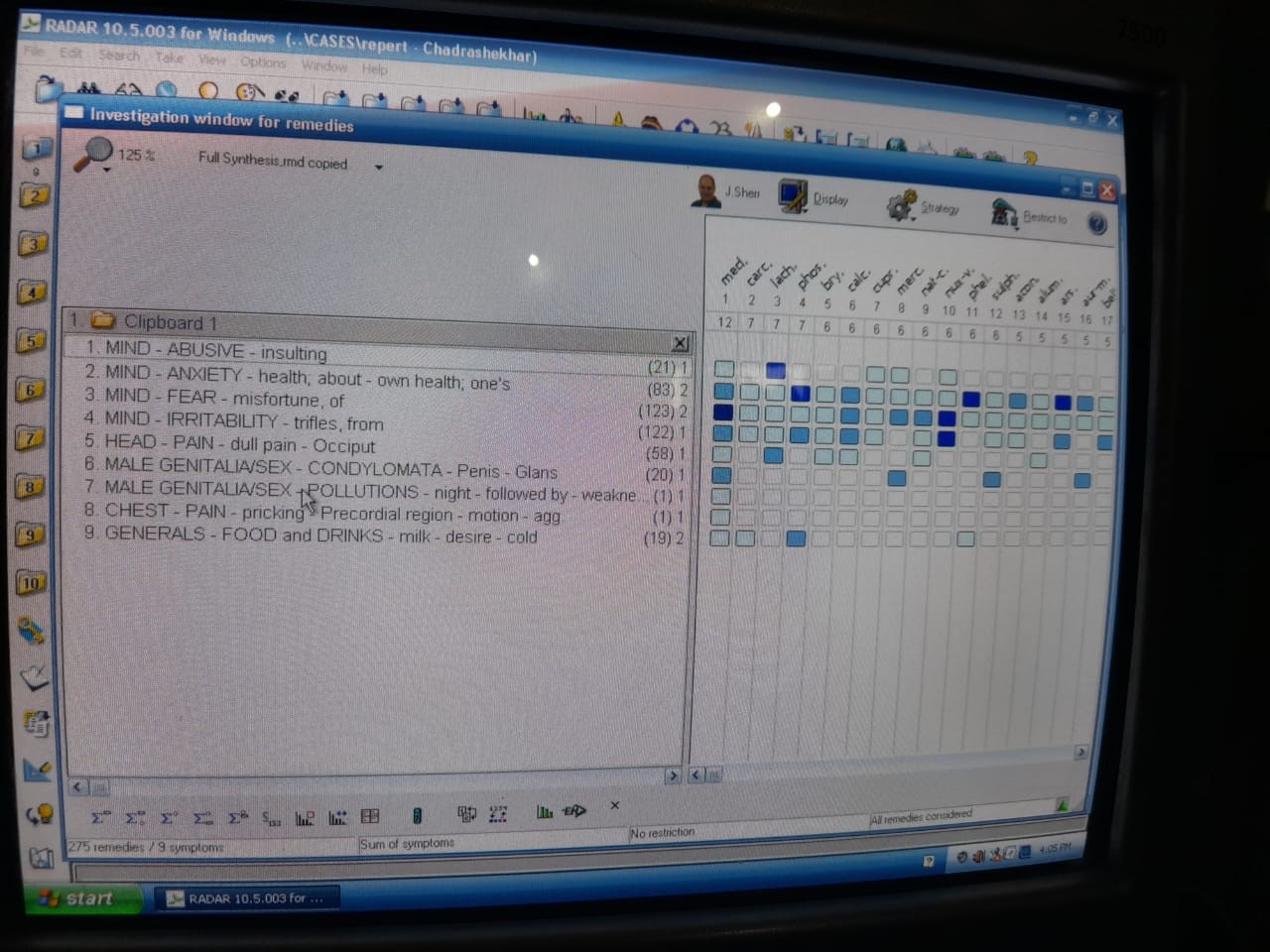
Follow Up:
Table 2: Date-wise description of prescribed remedy
| DATE | SYMPTOMS | MEDICINES |
| 01-03-2020 | Patient Ist visit | Medorrhinum 200/ 3 doses (“The dose of medicine (of the first prescription) that acts without producing new troublesome symptoms in to be continued while gradually ascending, so long as the patient with general improvement, begins to feel in the mild degree the return to of one or several old original complaints”.) (Aph 248,280)9 |
| 30-03-2020 | Patient finds improvement in the outgrowth along with pain in occiput and chest | Placebo |
| 29-04-2020 | Improvement in pain in head and Chest pain but outgrowth on penis with involuntary emissions persists | Medorrhinum 200/ OD/ 3days (According to Kent’s 11th observation reappearance of older symptoms and the improvement is standstill then the repetition of the remedy should be prescribed)10 |
| 30-05-2020 | Further improvement in the outgrowth on penis and seminal emissions. Chest pain and pain in occiput relieved | Placebo |
| 29-06-2020 | Marked improvement in the outgrowth and involuntary seminal emissions | Placebo |
Before treatment
Fig 2: Outgrowth on penis with yellowish discharge
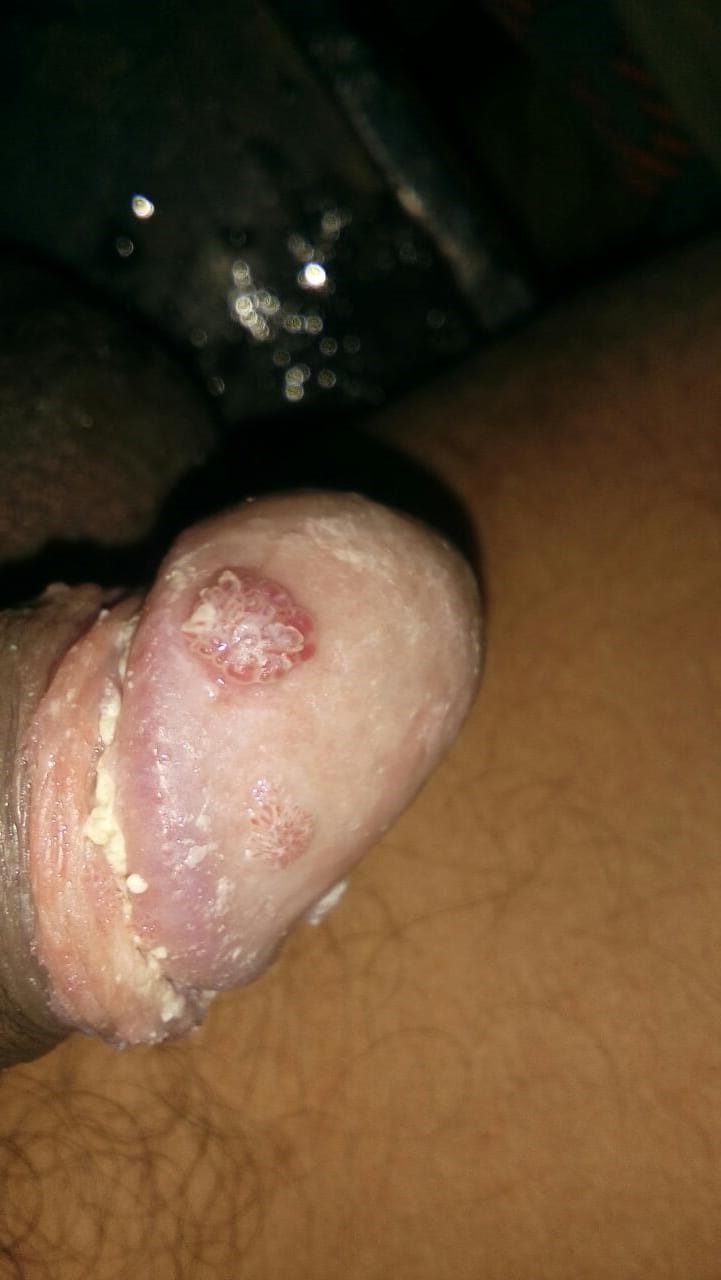
After Treatment
Fig 3: Disappearance of the outgrowth from penis
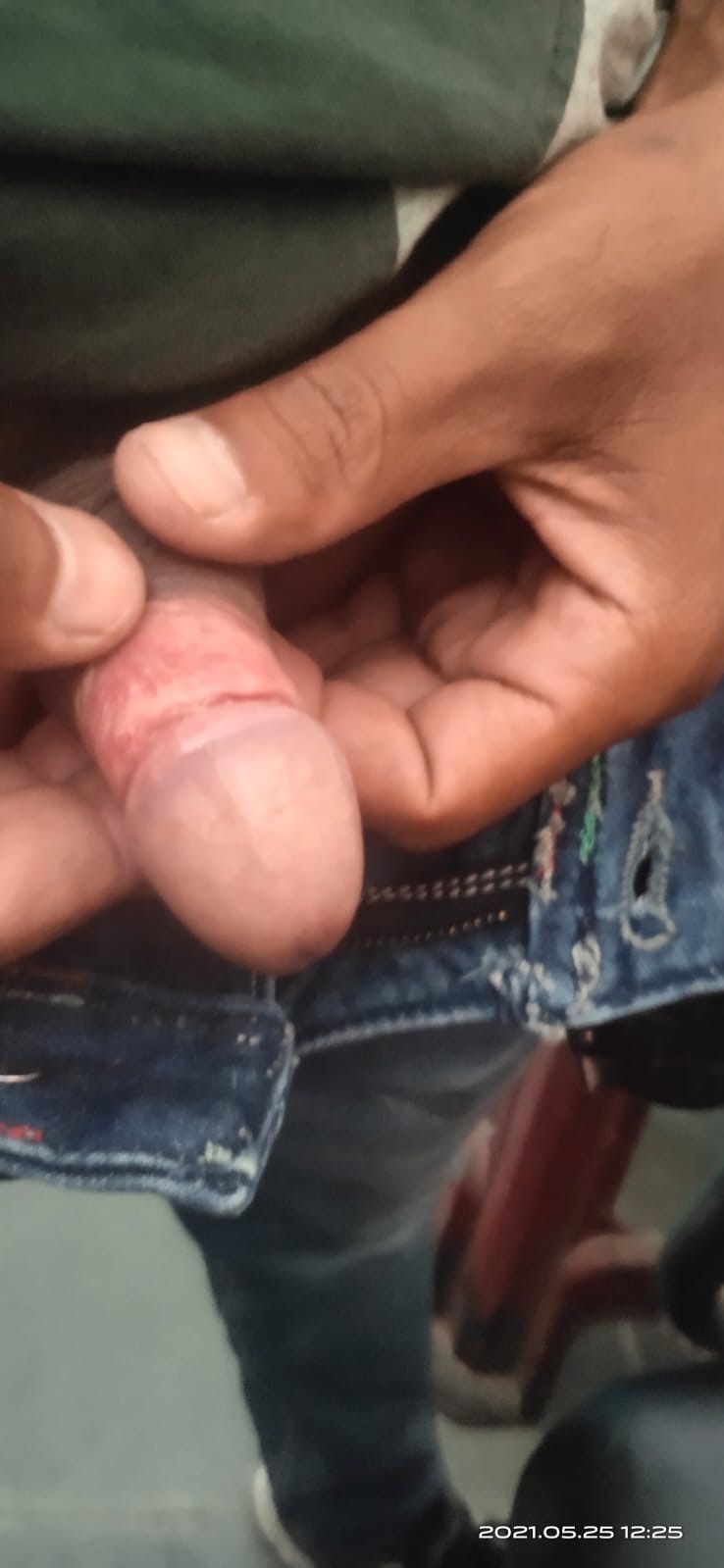
Discussion and conclusion
Homoeopathic remedy selected on the basis of principles pf homoeopathy proved to be very effective in this case of gonorrhoea and shown good results of improvement. Medorrhinum was selected on the basis of characteristic particulars of the case and mental generals keeping in mind materia medica and homoeopathic principles. Treatment was continued for 4 months. There was marked improvement after the first prescription followed by placebo after one month. Next dose of Medorrhinum 200 was given after 2 months when the improvement becomes standstill.
The potency selection was done on the basis of susceptibility and nature of the medicine given11.
1. The greater the
characteristic symptoms of the drug in the case, the greater the susceptibility
to the remedy and the higher the potency required.
2. Age: medium and higher potencies for children
3. Higher potencies for sensitive, intelligent
persons.
4. Higher potencies for persons of intellectual
or sedentary occupation and those exposed to excitement or to the continual
influence of drugs.
5. In terminal conditions even the crude drugs
may be required
He also writes, “different potencies act
differently in different cases and individuals at different times under
different conditions. All may be needed. No one potency, high or low, will meet
the requirement of all cases at all times.”
As the patient was young, the susceptibility was high but the disease was in organic stage and according to duration of disease and nature of the remedy, moderate potency of 200 was selected for prescription.
Conflicts of interest: None
References
- WHO guidelines for the treatment of Neisseria gonorrhoeae., 20 Avenue Appia, 1211 Geneva 27, Switzerland, WHO Press, [Internet] 2016. World Health Organization, p-2. Available : (http://www.who.int/about/licensing/ copyright_form/index.html). [Accessed on 2 Jan 2022]
- Leone PA. Epidemiology, pathogenesis and clinical manifestations of Neisseria gonorrhoeae infection. April 2013. Available: www.uptodate.com/contents/epidemiology-pathogenesis-and-clinical-manifestations-of-neisseria-gonorrhoeae-infection?source=see_link#H4
- Piszczek J, St Jean R, Khaliq Y. Gonorrhea: Treatment update for an increasingly resistant organism. Can Pharm J (Ott). 2015;148(2):82-89. Doi:10.1177/1715163515570111
- World Health Organisation (WHO), icd10data.com, 2022 ICD-10 -CM Diagnosis code [Internet], Geneva, Switzerland, World Health Organisation 1993; [Accessed on 30 Sep 2021], https://www.icd10data.com/
- Schroyens F. Radar 10 Homoeopathic Repertory Software. CDROM. Available: http://www.archibel.com/radar10.html.
- Hering C. The Guiding symptoms of our Materia Medica, Available: http://www.homeoint.org/hering/m/med.htm. 2005
- Clarke J H. The Dictionary of Practical Materia Medica, Available: http://www.homeoint.org/clarke/. 2000
- Boericke W. Pocket Manual of Homoeopathic Materia Medica and Repertory. 9th Reprint ed. New Delhi: B Jain Publishers; 2007.
- Hahnemann S. Organon of Medicine. 6th ed. New Delhi: B Jain Publishers; 2002. P. 227-8
- Kent J T. Lectures on Homoeopathic Philosophy. Archive.org [Internet]. Chicago. Ehrhart & Karl, 1919. Available at https://archive.org/details/lecturesonhomoe00kentgoog. [Accessed on 01 Jan 2022].
- Close S. M. The Genius of Homoeopathy: Lectures and Essays on homoeopathic philosophy. Homoint.org. New York. Nanopathy, 1981. Available at http://www.homeoint.org/books4/close/index.htm. [Accessed on 2 Nov 2021].
About Author:
Dr Ajay Vishwakarma
Principal I/C, (Associate Professor/
HOD, Department of Anatomy, Chandola Homoeopathic Medical
College and Hospital, Rudrapur, U S
Nagar, Uttarakhand)
Dr Nitin Kumar
Professor/HOD, Department of Materia Medica, Chandola Homoeopathic Medical College and Hospital, Rudrapur, U S Nagar, Uttarakhand.
[Corresponding Author: Dr Ajay Vishwakarma, BHMS, M.D. (Hom.), Ph.D (Hom.), Principal I/C, (Associate Professor/ HOD, Department of Anatomy, Chandola Homoeopathic MedicalCollege and Hospital, Rudrapur, U S Nagar, Uttarakhand)]


